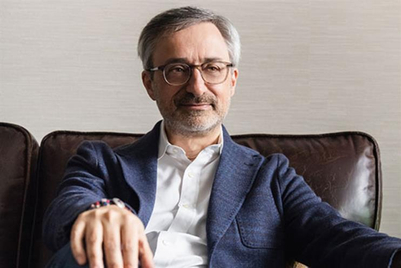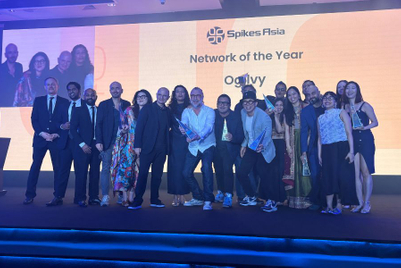.JPG&h=570&w=855&q=100&v=20250320&c=1)
South Korea might have had a digital headstart over many other Asian economies, but that does not mean that the rapid pace of change is slowing down.
As our week-long series of On The Ground features will show, this is still a country grappling with technological advances and swiftly shifting consumer trends. And the marketing and creative industries are no exception.
As GroupM Korea CEO Seon Cho pointed out, online advertising has a 20-year-old history in the country, but that doesn’t mean that advertisers and agencies are content with staying on familiar ground.
Online advertising
Our feature on Wednesday will highlight “dramatic changes” in online advertising, with search and display ads decreasing while media usage such as mobile, video, DSP/DMP, and personal media are rapidly growing.
Indeed, an eMarketer survey published at the end of 2015 showed that nearly two in five digital ad dollars spent by advertisers in South Korea this year will go toward mobile internet formats, including display and search.
That’s nearly double the share of digital ad spending South Korean advertisers devoted to mobile in 2013, when the country lagged both the US and Japan by this metric. But in 2015, South Korea pulled into the lead, with an estimated 38.4 per cent of all digital ad spending going toward impressions served to mobile phones and tablets.
While the media-spend surge towards digital is clear, South Korea displays some interesting attitudes towards online behaviour.
Consumer trends
As our piece tomorrow looking at consumer trends shows, South Koreans are unlikely to share content online. A Social@Ogilvy survey recently revealed that Koreans are the least active sharers on social media; only 57 per cent of users actively share content.
And when they do share, they largely focus on entertainment, politics and celebrities—not why they support a particular brand.
Our piece also identifies three trends prevalent among Korean consumers; the demand for a strong visual presence, local, user-generated content and videos under three minutes long.
|
|
In fact, user-generated content is becoming increasing professional thanks to more affordable technology and a growing community of content creators.
This reinforces the notion that Koreans prefer local content over international content. As Ferrero’s Korea marketing manager Luigi Mirri stated: “The clear preference for locally developed content is what I would probably point out as a major factor that differentiates Korea from other Asian countries.”
In addition to some unique media trends facing brands and agencies, there are also growing economic concerns to contend with.
The country’s economic growth fell back to 2.6 per cent in 2015, following a slow fourth quarter and the sharpest annual decline in exports since the global financial crisis.
The Bank of Korea revised its growth estimate for 2016 down to 3.0 per cent, but analysts say even that might be ambitious given the uncertainties surrounding the global economic recovery and the slowdown in China.
It is well documented that South Korea's economy is massively exposed to China, with the country being the largest importer of South Korean goods. It’s fair to say many in Seoul are keeping their fingers crossed that China will hit its growth range of 6.5 to 7 per cent this year, despite widespread expectations it will be considerably lower in reality.
It is against this backdrop that agencies are racing to keep up with the brand demands and consumer realities in the country, but the rate of change is proving challenging.
“The media environment has changed, there’s no longer a clear delineation between ATL or BTL efforts,” said Kyunghee Lee, client service director at BBDO Korea. “Revenue from media commissions has gone down as brands shift away from traditional media to digital channels.
“Korean brands are under pressure from all sides. Consumer brands especially also face competition from other markets. Thanks to the rise of ecommerce, Korean shoppers no longer have to rely on local brands and now go online to buy from the US or UK for better deals.”
But while South Korean consumers are looking beyond their own borders, so are local brands, with cosmetics giant AmorePacific being one of them.
The company owns popular brands such as Hera, IOPE, Laneige, Innisfree and Etude House and recorded approximately US$4.9 billion in global sales in 2015.
MinJeon Rhee, head of marketing strategy unit and executive vice president, said that while the company enjoys a healthy presence in Asia, it seeks to grow beyond the region to cover North America, South America and the Middle East.
Creative trends
With the media game changing, so has the approach agencies and brands must take when it comes to the content that gets distributed.
Several industry insiders point out that the market is moving away from advertising and inching closer to digital content.
As Lee stated: “We’re looking for creators, not just people able to create television commercials,” and it is the country’s creative abilities that come under the spotlight in Thursday’s feature.
While K-pop often takes most of the headlines, last year President Park Geun-hye, launched a “creative economy” plan last year to “foster startups and promote entrepreneurship” with a focus on creating more opportunities for young people.”
According to Wain Choi, SVP, chief creative officer at Cheil Korea, this was a welcome step, but he believes the industry as a whole needs to up its game.
“I think the ad industry is lagging behind,” said Choi. “There are still certain stigmas about advertising if you compare the industry to places like North America. Ridley Scott, for example, has done both commercials and feature films since the beginning of his career. That hasn’t translated here.”
While Choi thinks the change is happening slowly, he sees that film talent is divided into two distinct camps: those that do commercials and those that don’t. “Filmmakers are afraid of working on TVCs because they feel it will affect their careers in film,” he added.
One of the hurdles in this area could be that TV is still a main medium in South Korea. Also, advertisers generally purchase commercial spots that are about 15 seconds long, rather than 30 or 90 seconds, where more of a story can be told.
PR scene
The subject of storytelling is one that is getting a lot of attention among the country’s PR practitioners.
As Friday’s feature on PR reveals, the move from traditional to digital and now, to social media marketing, is forcing agencies in Korea to become experts in crafting brand stories.
“Clients in Korea are now being trained to become media outlets themselves, telling stories of their brand,” said Weber Shandwick’s South Korea MD Tyler Kim. “Agencies are helping them with editorial strategy and content creation, and along with this comes the need to provide content in various formats—not just text but visual and moving images, too.”
Kim’s biggest challenge is finding the right people to address this digital and content gap. “Before, PR agencies hired former journalists and reporters,” he says. “Now to work in PR, you need to have a much more comprehensive skill set that includes expertise in digital. Agencies now need to attract people who have experience in areas like marketing/advertising, digital channel operation, analytics and mobile optimisations.”
There are similar recruitment issues playing out at the nation’s creative industries too.
As GroupM’s Cho added: “This also includes data and analytics where you need good people who can breakdown all these data and turn them into great insights that would help campaigns.”
As this week’s features will show, Korea may not be starting from as a low a base as some of its neighbours when it comes to digital development, but it doesn’t necessarily mean the road ahead will be any less bumpy.



.jpg&h=334&w=500&q=100&v=20250320&c=1)

+(1).jpg&h=334&w=500&q=100&v=20250320&c=1)
.jpg&h=334&w=500&q=100&v=20250320&c=1)

.jpg&h=334&w=500&q=100&v=20250320&c=1)

.jpeg&h=334&w=500&q=100&v=20250320&c=1)
.jpg&h=334&w=500&q=100&v=20250320&c=1)







.jpg&h=268&w=401&q=100&v=20250320&c=1)
